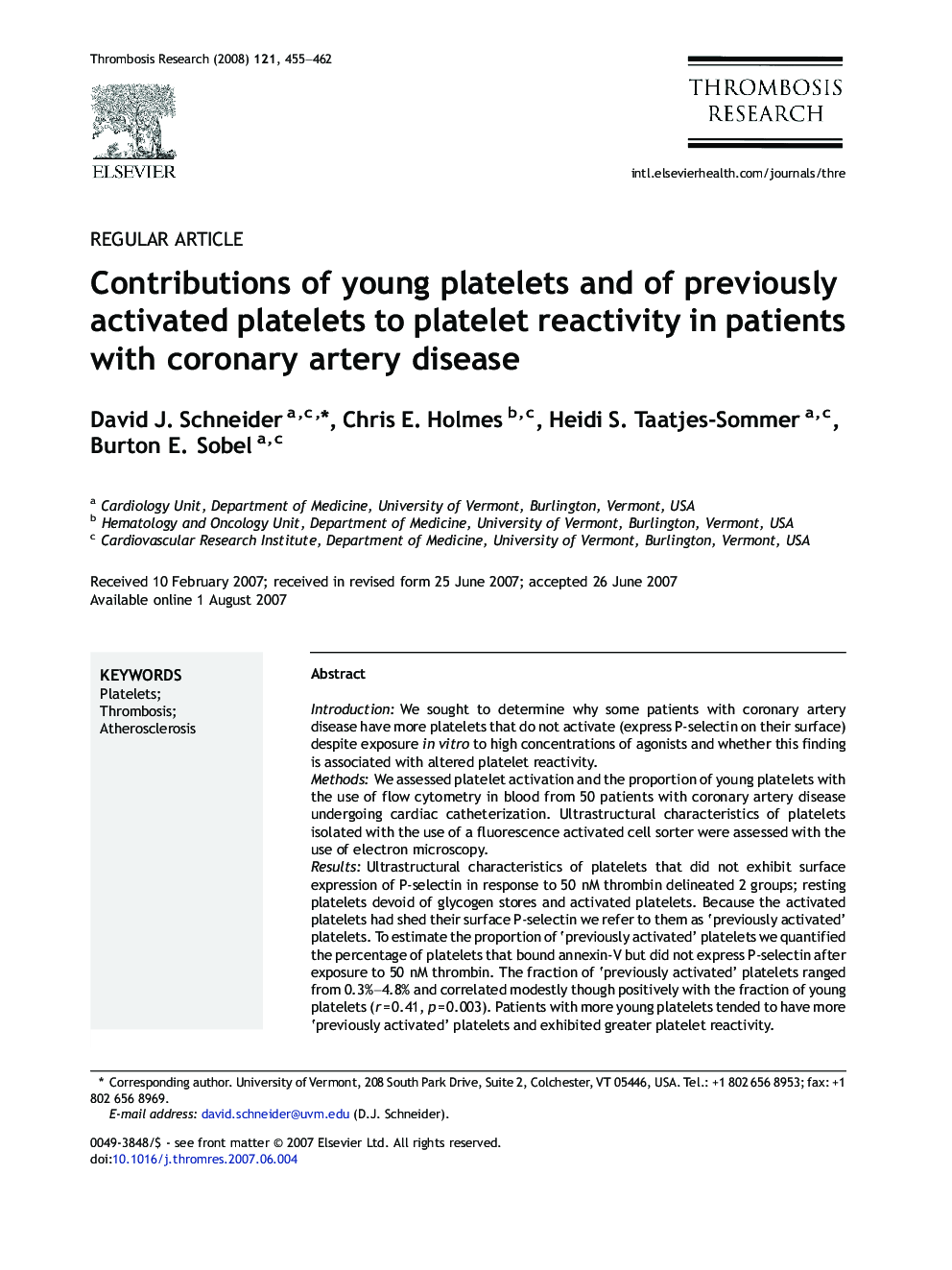| کد مقاله | کد نشریه | سال انتشار | مقاله انگلیسی | نسخه تمام متن |
|---|---|---|---|---|
| 3029670 | 1183105 | 2008 | 8 صفحه PDF | دانلود رایگان |

IntroductionWe sought to determine why some patients with coronary artery disease have more platelets that do not activate (express P-selectin on their surface) despite exposure in vitro to high concentrations of agonists and whether this finding is associated with altered platelet reactivity.MethodsWe assessed platelet activation and the proportion of young platelets with the use of flow cytometry in blood from 50 patients with coronary artery disease undergoing cardiac catheterization. Ultrastructural characteristics of platelets isolated with the use of a fluorescence activated cell sorter were assessed with the use of electron microscopy.ResultsUltrastructural characteristics of platelets that did not exhibit surface expression of P-selectin in response to 50 nM thrombin delineated 2 groups; resting platelets devoid of glycogen stores and activated platelets. Because the activated platelets had shed their surface P-selectin we refer to them as ‘previously activated’ platelets. To estimate the proportion of ‘previously activated’ platelets we quantified the percentage of platelets that bound annexin-V but did not express P-selectin after exposure to 50 nM thrombin. The fraction of ‘previously activated’ platelets ranged from 0.3%–4.8% and correlated modestly though positively with the fraction of young platelets (r = 0.41, p = 0.003). Patients with more young platelets tended to have more ‘previously activated’ platelets and exhibited greater platelet reactivity.ConclusionsA greater proportion of ‘previously activated’ platelets is associated with a greater fraction of young platelets and increased platelet reactivity. The presence of ‘previously activated’ platelets in circulating blood may be a marker of micro or macro thrombosis.
Journal: Thrombosis Research - Volume 121, Issue 4, 2008, Pages 455–462